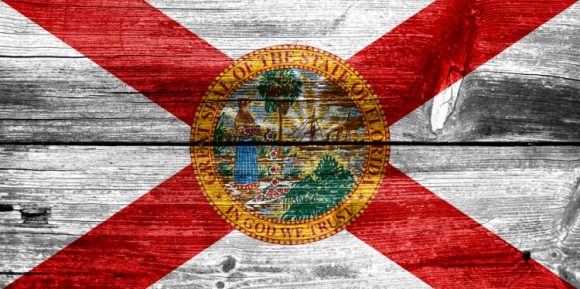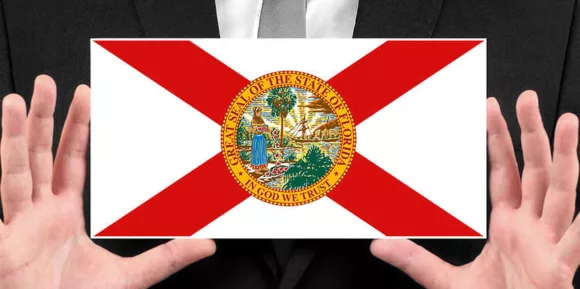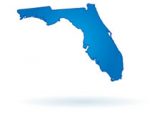Finding the right auto insurance in Florida can be daunting, given drivers’ vast array of options and diverse coverage needs. As a state prone to unique challenges such as hurricanes and a high rate of road accidents, Florida requires drivers to be exceptionally prudent about their insurance choices. This article will guide you through understanding the state’s auto insurance landscape, key factors to consider, ways to compare rates, and a review of top-rated insurers. Additionally, we’ll cover special considerations for Florida drivers and tips to maximize your insurance benefits.
Understanding Florida’s Auto Insurance Landscape
Florida’s auto insurance landscape is distinct due to its no-fault insurance laws. In this system, drivers must hold Personal Injury Protection (PIP) coverage, which pays for their medical expenses regardless of who is at fault in an accident. Legislators design this requirement to streamline claims and reduce litigation. However, it also means that minimum coverage may not be sufficient for all drivers, given the potential for high medical costs and property damage.
Additionally, Florida’s minimum insurance requirements are among the lowest in the nation, which can be both a benefit and a risk. While this means lower mandatory premiums, it also implies that minimum coverage may not be adequate in severe accidents. Drivers are mandated to carry at least $10,000 in PIP and $10,000 in Property Damage Liability (PDL). However, considering the state’s high rate of uninsured drivers, additional coverage like uninsured/underinsured motorist protection is often advisable.
The state’s diverse population and geography also influence insurance rates. Urban areas tend to have higher premiums due to increased traffic and accident rates, while rural areas may see lower rates. Furthermore, Florida’s susceptibility to hurricanes and flooding can affect premiums, as insurers consider these risks when setting rates.
Understanding these elements is crucial for Florida drivers navigating the auto insurance market. This comprehension helps them make informed decisions and select a policy that genuinely meets individual needs and offers adequate protection.
Key FactorsCritical Choosing the Right Coverage
When selecting auto insurance in Florida, understanding the key factors influencing coverage and premiums can help you make more informed decisions. One of the most critical aspects is determining the right amount of coverage. While PIP and PDL are mandatory, you may need more comprehensive coverage depending on your circumstances, such as collision and comprehensive insurance, which cover damages to your vehicle from accidents and non-collision incidents like theft or natural disasters.
Your driving history significantly impacts your premium rates. Drivers with clean records typically enjoy lower rates, while those with accidents or violations may face higher premiums. It’s wise to check your driving record, correct errors, and practice safe driving habits to maintain favorable insurance rates. Additionally, your credit score can influence your premium, as insurers often use it as a predictor of risk.
Another factor to consider is the level of customer service and claims handling offered by the insurer. Research customer reviews, ratings, and the insurer’s financial stability to ensure they can provide timely and effective support when needed. Companies with a robust reputation for customer service can significantly improve your overall experience.
Finally, consider any discounts or bundling options available to you. Many insurers offer discounts for safe driving, bundling multiple policies, or installing safety devices in your vehicle. These opportunities can substantially reduce your insurance costs while providing comprehensive coverage.
Comparing Rates: Finding the Best Auto Insurance in Florida
To find the best auto insurance deals in Florida, shopping around and comparing rates from multiple insurers is essential. This process begins with obtaining quotes from several providers online and through local agents. Comparing quotes helps you understand the market rates and identifies which companies offer competitive pricing for the coverage you need.
When comparing rates, pay attention to the details of each policy, including deductibles, coverage limits, and exclusions. A lower premium may seem attractive initially, but it might come with higher deductibles or inadequate coverage, which could lead to significant out-of-pocket expenses in the event of an accident. It’s crucial to balance affordability with adequate protection.
Consider using online comparison tools that allow you to view multiple quotes side by side. These tools can save time and provide a clear overview of how different policies compare. They also often include user reviews and ratings, which can offer insights into the experiences of other policyholders.
Additionally, don’t shy away from negotiating with insurers. If you’ve found a better quote elsewhere, mention it to your preferred insurer. In many cases, they may be willing to match or beat the offer to retain your business. This proactive approach can yield substantial savings and ensure you get the best deal.
Top-Rated Auto Insurers in Florida
Florida hosts several top-rated auto insurers renowned for their service quality, comprehensive coverage options, and competitive pricing. State Farm is consistently a favorite among Floridians, offering various discounts, such as those for safe driving and multiple policies. Their strong financial stability and efficient claims service make them reliable for many drivers.
Geico is another popular choice, often recognized for its affordable premiums and excellent customer service. They provide a user-friendly digital platform for policy management and claims submission, making it convenient for tech-savvy drivers. With various discounts, Geico remains a competitive option in the Florida market.
Progressive stands out with its innovative coverage options and competitive pricing strategy. Known for its “Name Your Price” tool, Progressive allows drivers to customize policies based on their budget while still receiving adequate protection. They also offer usage-based insurance, which can benefit low-mileage drivers seeking lower premiums.
Lastly, Allstate offers a broad range of coverage options and a reputation for excellent customer service. Their Drivewise program rewards safe drivers with discounts, which can further reduce premium costs. Allstate’s comprehensive coverage and personalized service make them a solid choice for those seeking reliable auto insurance in Florida.
Special Considerations for Florida Drivers
Florida drivers face unique challenges that necessitate special considerations when choosing auto insurance. The state’s high incidence of uninsured drivers makes uninsured/underinsured motorist coverage a crucial addition to any policy. This coverage protects you financially if you’re involved in an accident with a driver who lacks adequate insurance.
Another consideration is Florida’s vulnerability to extreme weather events, such as hurricanes and flooding. Drivers should consider adding comprehensive coverage to protect against damage from natural disasters. This coverage can provide peace of mind, particularly during hurricane season when a storm heightens the risk of vehicle damage.
Florida’s tourism industry also impacts driving conditions, with many out-of-state drivers unfamiliar with local traffic laws and patterns. This influx of out-of-state drivers can increase the likelihood of accidents, particularly in popular tourist destinations. As a result, having higher liability limits can be beneficial to cover potential damages and legal fees if an accident occurs.
Lastly, the diverse demographics and varied driving environments across the state mean that insurance needs can differ significantly from one region to another. Urban drivers might face higher premiums due to traffic density, while rural drivers might need to account for longer commutes. Tailoring your policy to your driving conditions and lifestyle is essential for optimal coverage.
Tips for Maximizing Your Insurance Benefits
Maximizing your auto insurance benefits in Florida involves strategically selecting and managing your policy. Review your coverage to ensure it aligns with your needs and adjust as necessary. This regular assessment helps prevent gaps in coverage and ensures you’re not overpaying for unnecessary additions.
Another effective strategy is to take advantage of available discounts. Many insurers offer reductions for safe driving records, low mileage, or vehicle safety features. Bundling different types of insurance, like home and auto, can also lead to significant savings. Always inquire about potential discounts when negotiating your policy terms.
Consider enrolling in usage-based insurance programs, which use telematics to reward safe driving habits with lower premiums. These programs can benefit drivers who maintain good driving practices and can adapt to monitoring. Maintaining a good credit score can also lead to better rates, as insurers often consider creditworthiness in their pricing models.
Finally, keep an open line of communication with your insurance provider. Understand the claims process and ensure you know how to proceed in the event of an accident. Being informed and proactive can help you make the most of your insurance policy and ensure you receive the benefits you’re entitled to when needed.
Conclusion
Choosing the best auto insurance in Florida requires careful consideration of the state’s specific challenges and your personal needs. You can find a policy offering comprehensive coverage and affordability by understanding the local insurance landscape, comparing rates, and exploring top-rated insurers. Consider particular factors unique to Florida, such as extreme weather and uninsured drivers, and apply strategies to maximize your benefits. With the right approach, you can secure an auto insurance policy that provides peace of mind and financial protection.


























